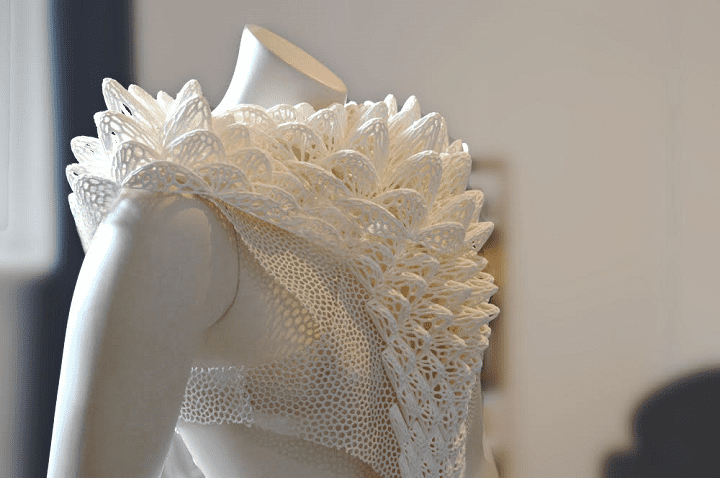
Credit: www.3dprint.com
3D printing is working its way more and more into the world of fashion. Whether it’s on the runways, in wearable collections or both, 3D printing is appearing in a variety of designers’ work. Just how important is 3D printing to the fashion industry, however? Will the technology truly change fashion design on a significant level, or is it just a peripheral novelty? In a paper entitled “Integration of 3 Dimensional Modeling and Printing into Fashion Design Curriculum: Opportunities and Challenges,” Nicole Eckerson and Li Zhao of the University of Missouri discuss whether 3D printing should be integrated into fashion design curriculum, as well as the barriers to adoption of 3D printing in fashion.
Although 3D printing has not yet reached the mainstream and mid-market segments, the authors point out, the technology is starting to “trickle down” into the luxury, accessory and maker domains. 3D printing has been recognized as a major influence in the work of designers and engineers over the last decade, but in the fashion world, educators are facing a lack of time, resources and knowledge to teach the technology to students.
“Integrating 3DP technology into curricula is still at its early stages and requires more pedagogical development in higher education and fashion related disciplines,” the authors state.
The authors employed a qualitative research design in their study, conducting semi-structured interviews with 3D printing industry and academic professionals. Eight industry experts and academic professionals were recruited in total.
“The focus of the interviews examined their knowledge and application of 3DP technology for the purpose of integrating into design curriculum,” the authors continue. “Once data collection was complete major themes were synthesized and recommendation for curriculum development was made.”
Three major themes emerged from the interview data. The first was that utilization of 3D printing technology has significant added value. One of the highest values added is expression, allowing designers to demonstrate their competence through unique designs. The authors also point out the environmental-friendliness of 3D printing, as many of its materials are recyclable and/or reusable. The second theme was that 3D printing has become an efficient method for production, workflow and exchange of information, and the third is that the use of 3D printing technology provides the opportunity for customization and limitless design possibilities.
“Although 3DP is not a magical solution to product design this technology can have a positive affect throughout the supply chain,” the authors state. “Using 3DP technology helps engage students in untraditional thought processes and forces learners to enhance their 3D visualization skills as opposed to the traditional two dimensional method taught. Causing design learners to think creatively about shape, volume, space, materials, assembly, design approach, and best practices.”
The most significant barriers for integrating 3D printing design into fashion curriculum include the lack of time, resources, funding and educator knowledge and skill. A barrier for students is accessibility and exposure. The challenge is for educators to find ways to train their students in 3D design and printing technology. Participants in the study agreed that educators must start with basic foundations, and that students need to have exposure to 3D modeling, 3D printers and a variety of materials.
“All parties agree that 3DP technology can assist in creating an opportunity for a collaborative environment to enhance student learning, engagement, workflow, exchange of information, and development of shared common language with others,” the authors conclude. “Study participants agree that the specific 3D modeling software, printer, and artifact made is less significant in the integration process than providing the opportunity for exposure, application, critical thinking, and problem solving.”
The U.S. Navy’s Maritime Industrial Base (MIB) Program, General Dynamics Electric Boat, and Lincoln Electric…
Caracol, a global leader in robotic large-format additive manufacturing, and RusselSmith, an ISO-certified provider of…
Works cited Additive Manufacturing Forecast 2025: Market - AMFG, accessed on June 28, 2025, https://amfg.ai/2025/02/12/additive-manufacturing-forecast-2025-market/…
National Additive Manufacturing and Innovation Company (NAMI), a joint venture between Dussur and 3D Systems…
The LEGO Group has announced the release of its first-ever mass-produced 3D printed component, which…
Boeing has unveiled a groundbreaking 3D-printed solar array substrate that promises to dramatically accelerate satellite…
This website uses cookies.